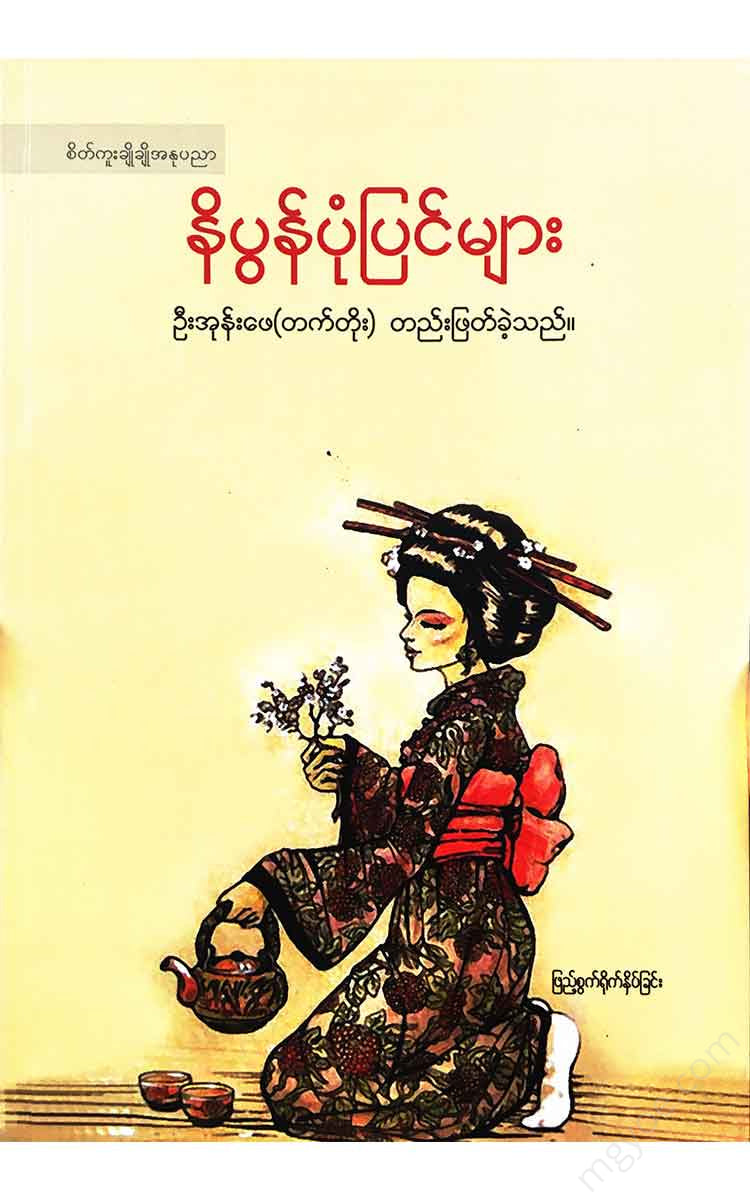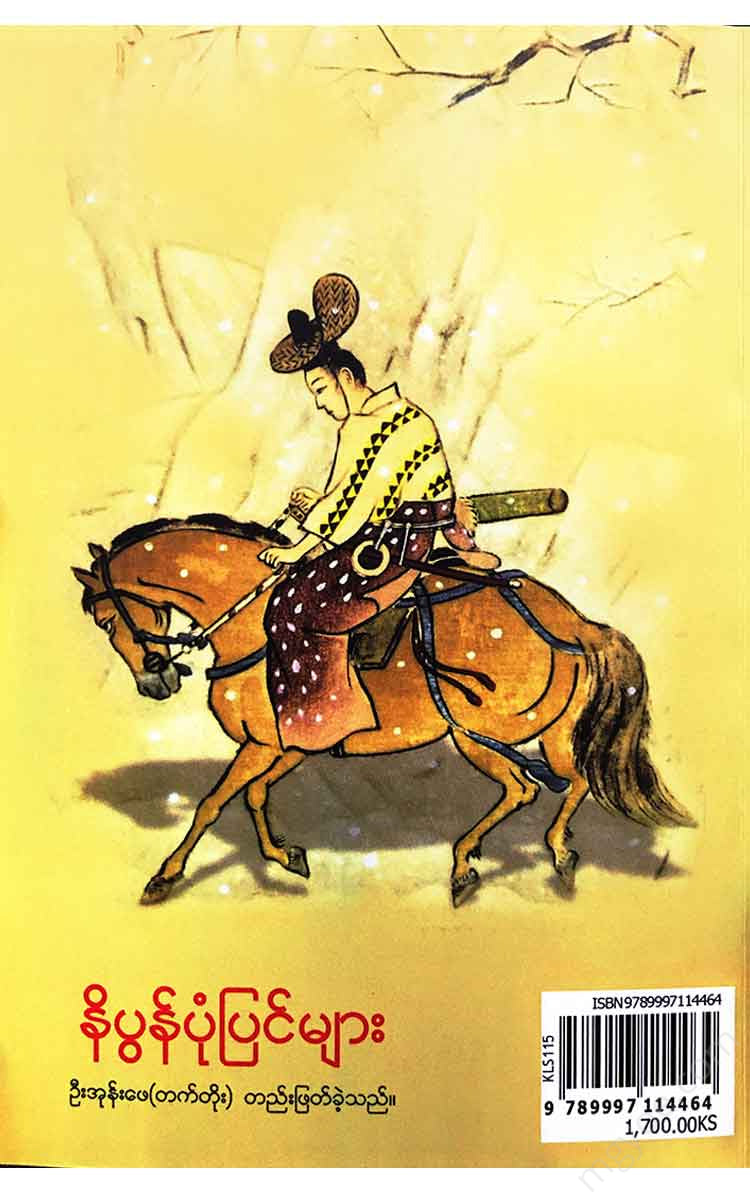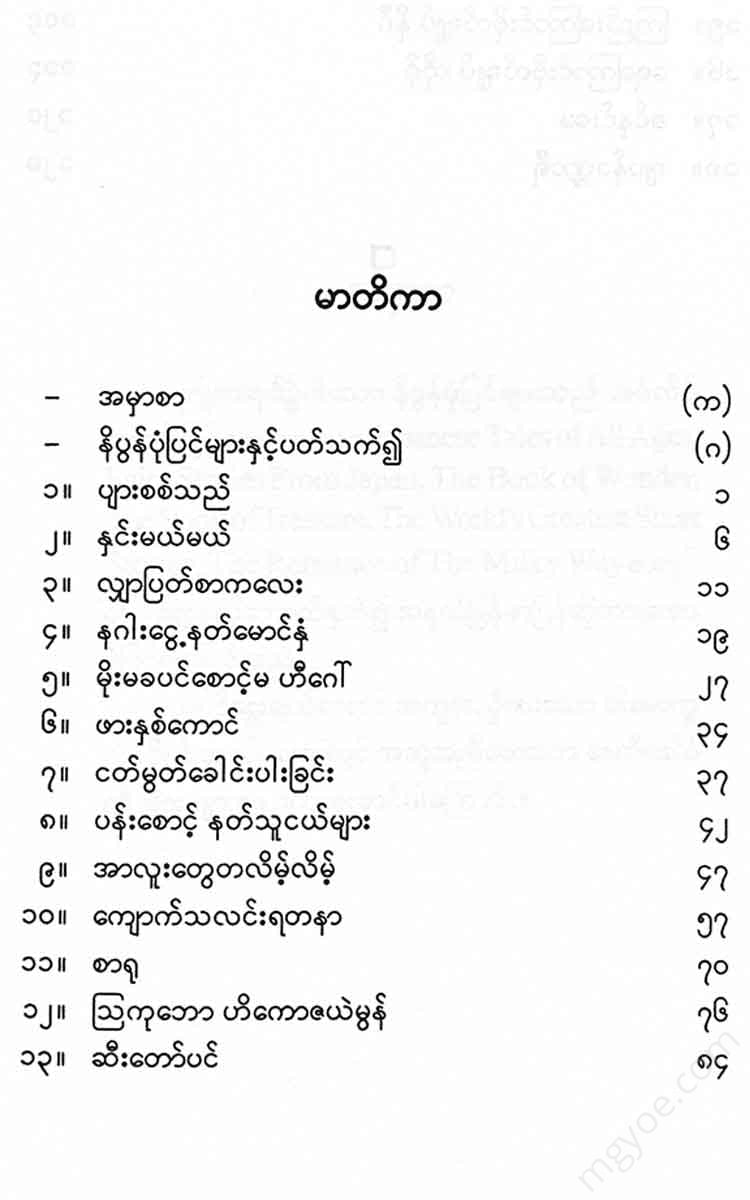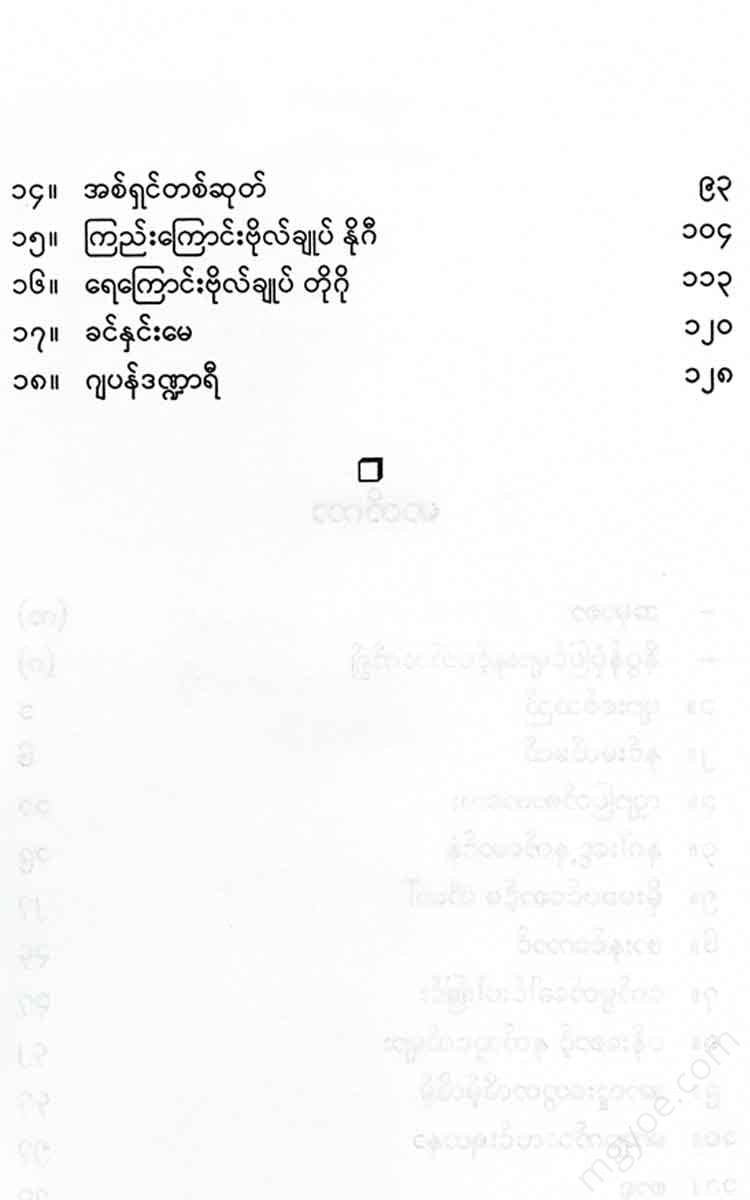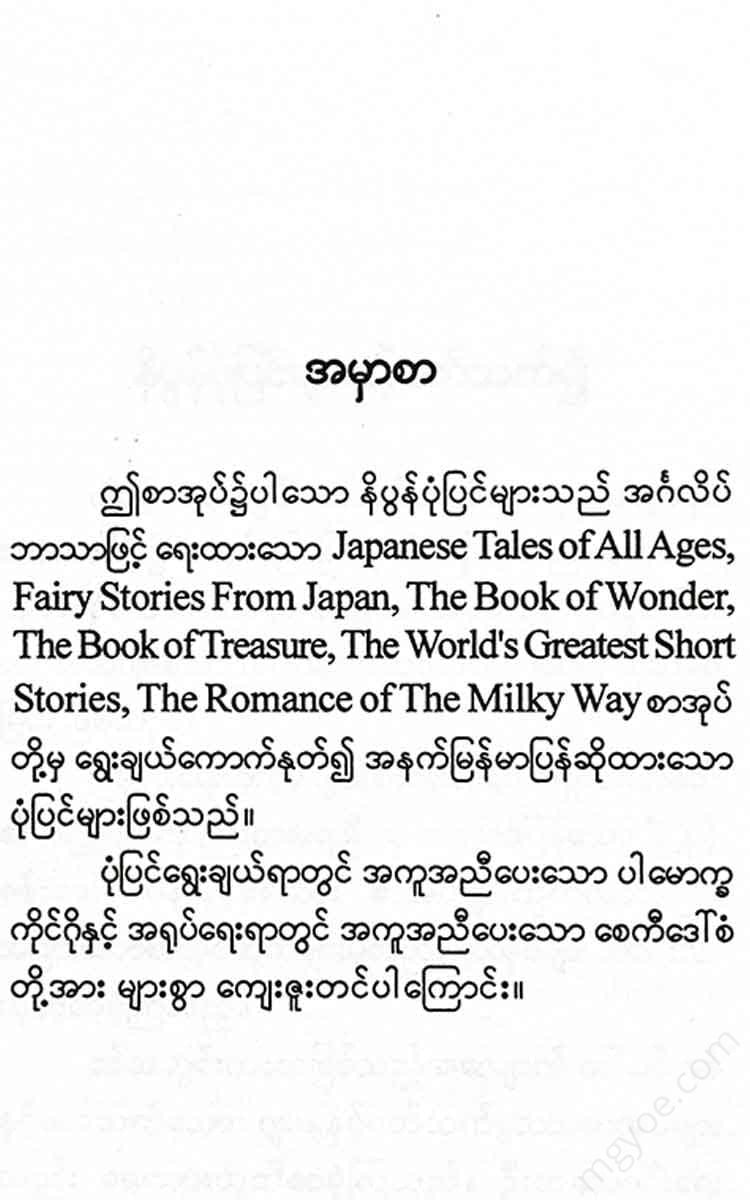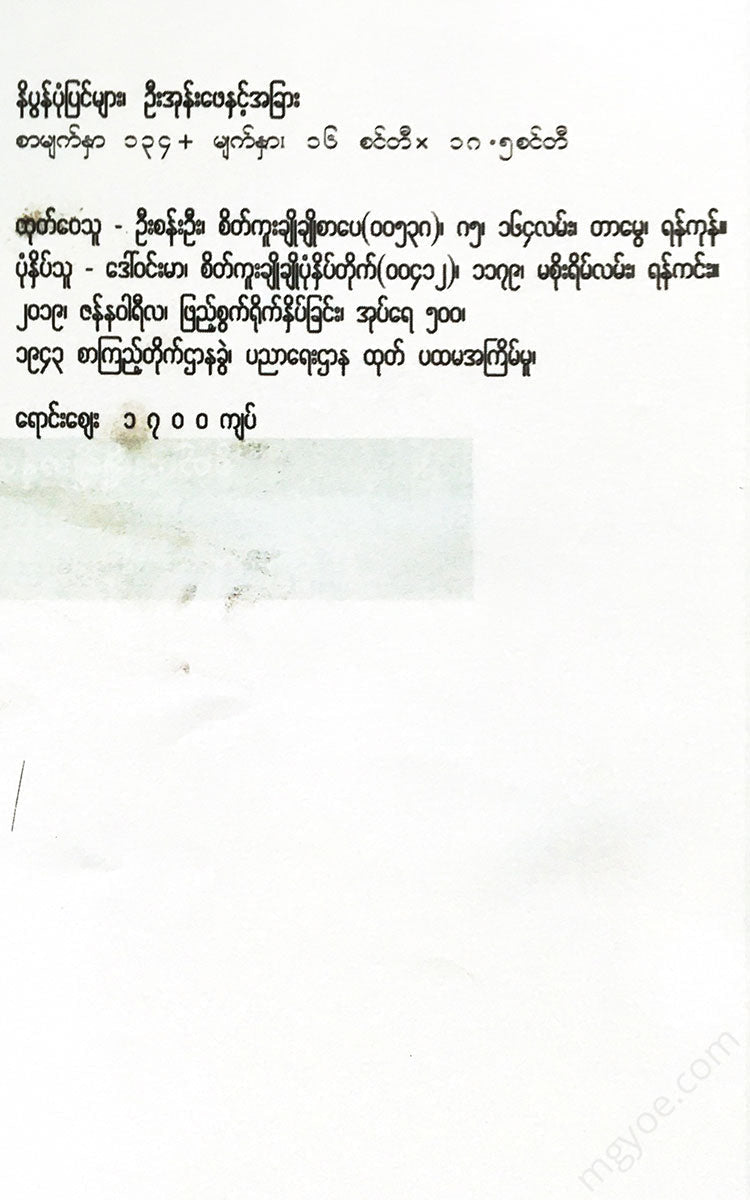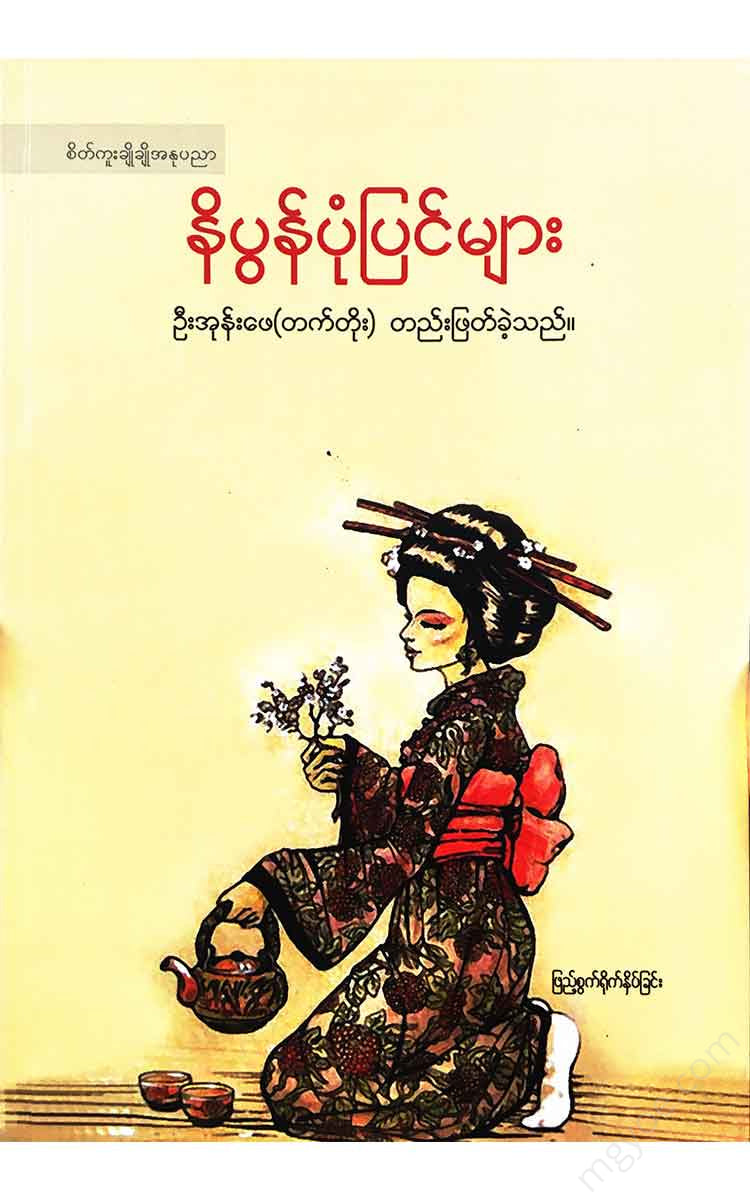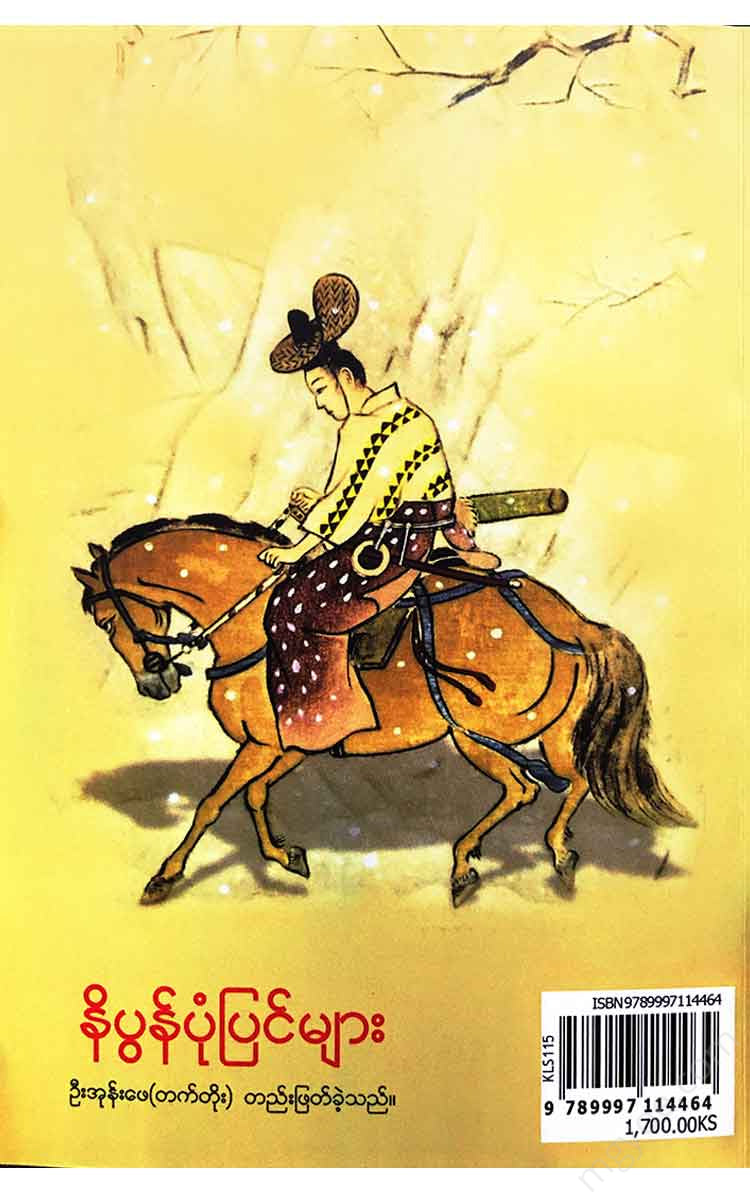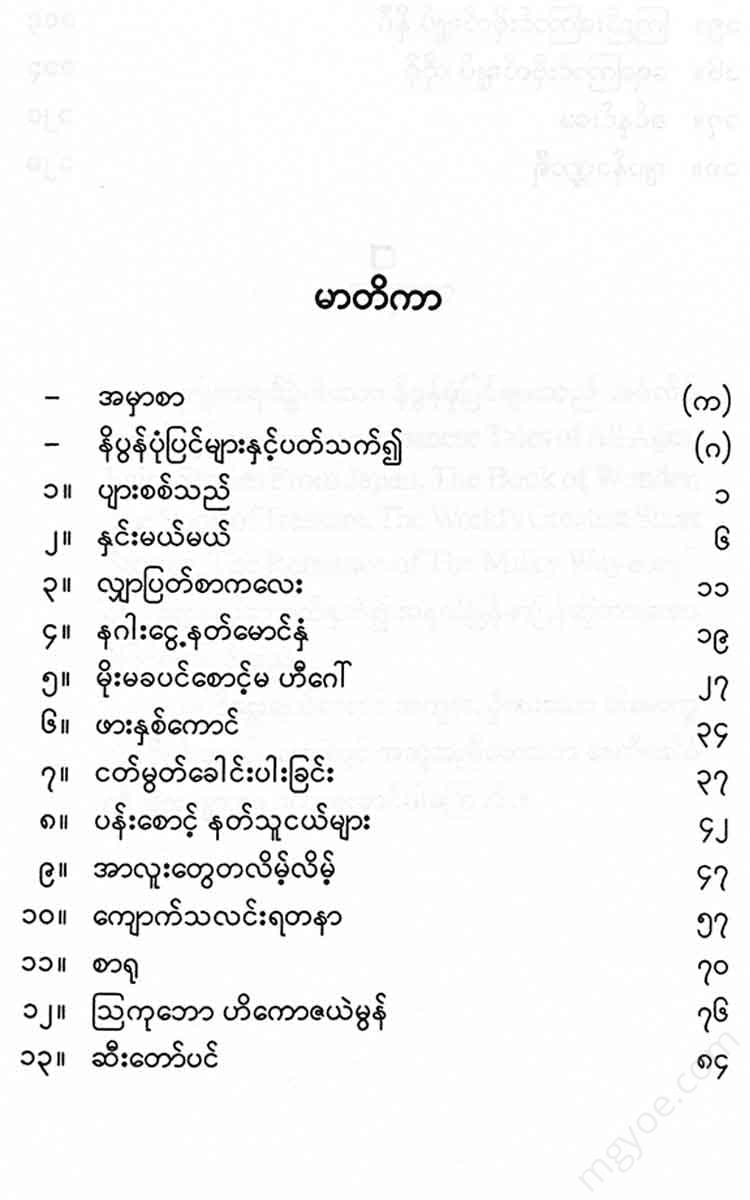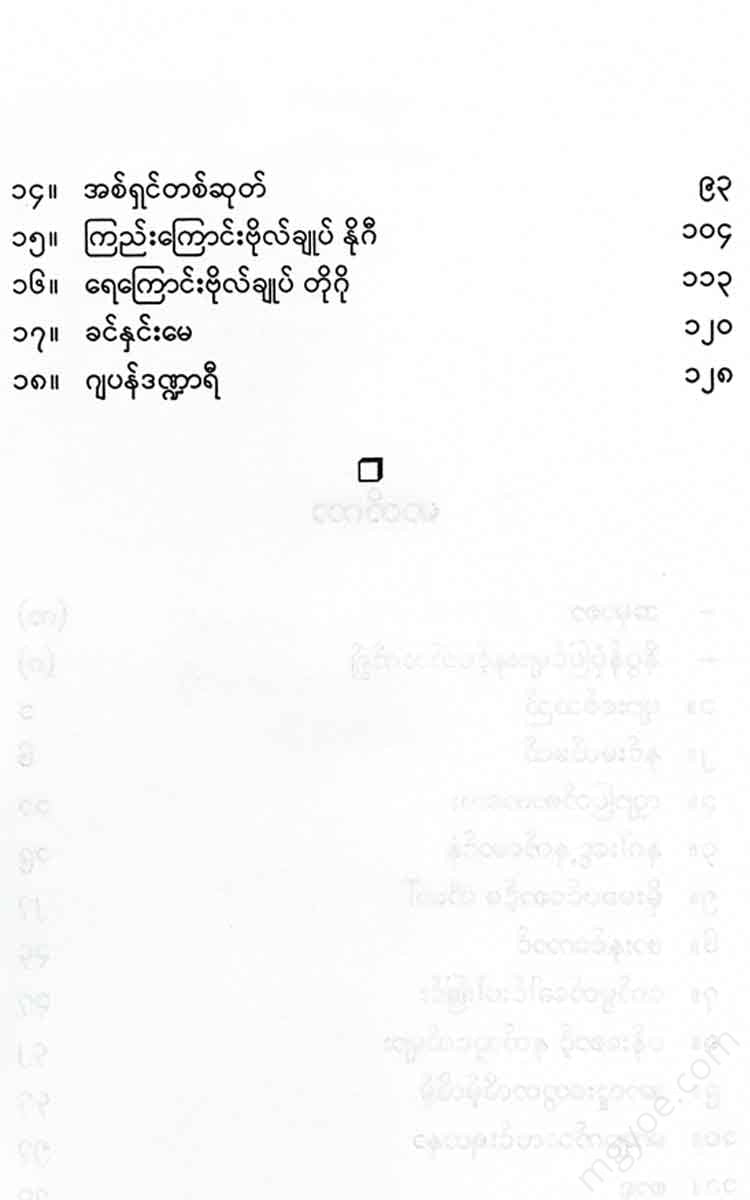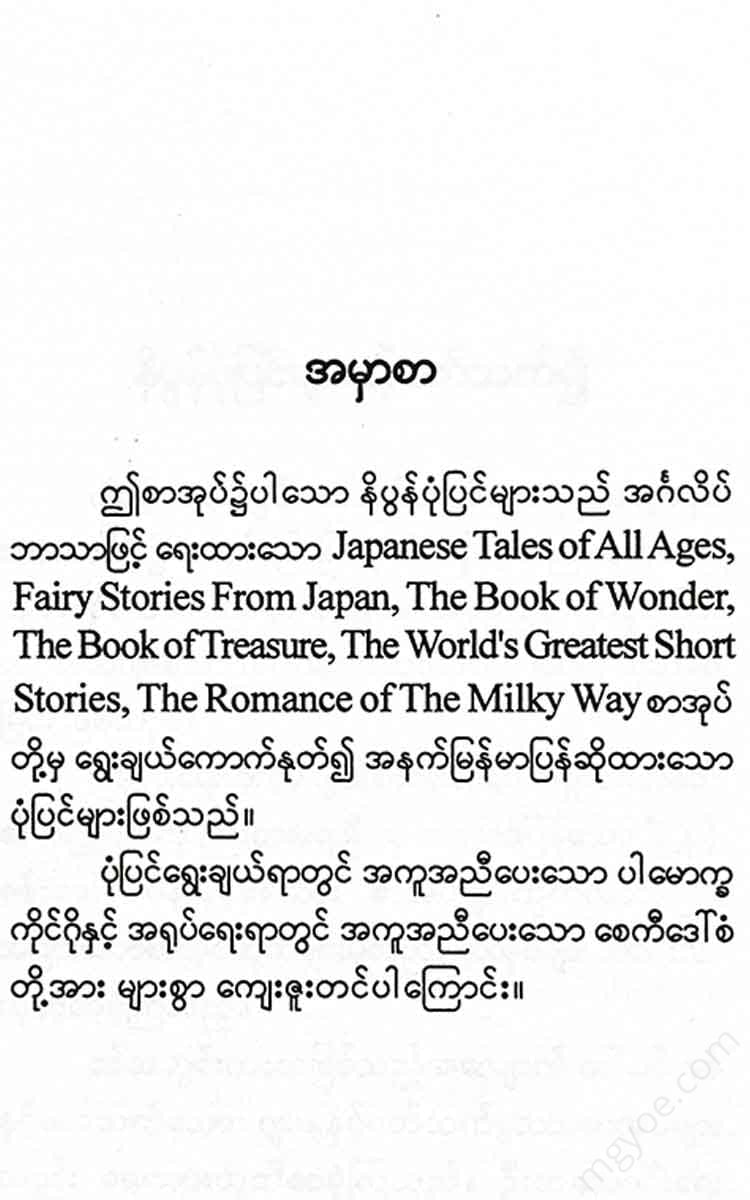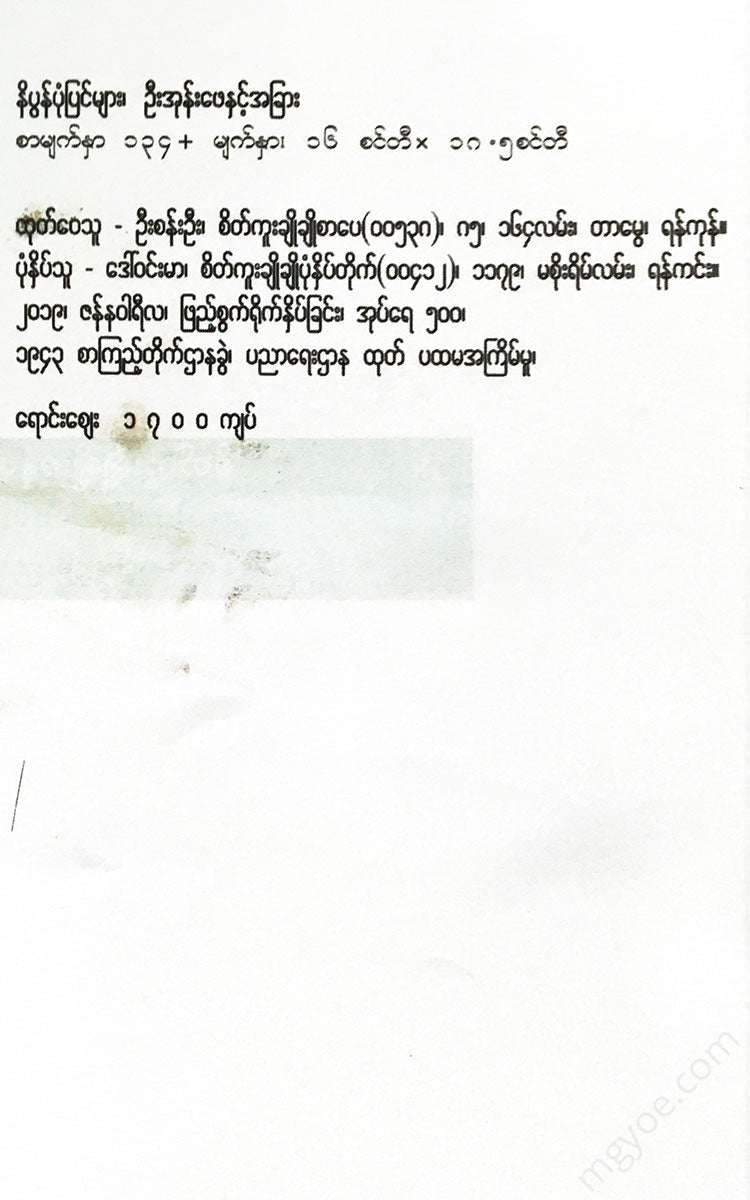စိတ်ကူးချိုချိုစာပေ
U Ohn Pe (Tattoe) - Japanese Stories
U Ohn Pe (Tattoe) - Japanese Stories
Couldn't load pickup availability
Regarding Japanese stories.
During the Japanese era, the world of book publishing was relatively easy to publish early on. The first book published was a Japanese language textbook with the name Nippon Burmese. It was published by a Japanese language school.
The books "Soil and Soldier" and " Flower and Soldier" translated by the Japanese author Ashi Hayato from the Kyabung Bookstore were published by Kyabung Bookstore. Other bookstores also published various books.
During the war, books about war and Japan were also published. U Ba Thaung's "Bushido", U Ohn Pe's "Japanese Stories Edited by" Yan Aung's "Love Wife and Soldier", Maha Swe's "Rangoon and Bomb Daw Ma Ma Khin" and Social Studies, Shwe Bra's "New Yangon Song", Mya Daung Nyo's "Thirty Comrades", "The Battle of Shwe Taung Prince", "Shwe Tu", Thakin Tun Ok "My Adventures", Thakin Basein's "Burmese Independence Struggle", etc.
During the Japanese era, writers had to submit their manuscripts to the Censorship Office for approval before they could be printed. Writers who sat in the printing press, writing and arranging page after page, had to finish their manuscripts from beginning to end.
Sayar Min Swe's novel "Sword" had to wait a long time for approval from the censors. The Chief Justice U Khin Aung and Sayar Min Swe were close friends because they were members of Sayar U Nya Na's group, but "Sword" had to be repeatedly edited to meet the censors' wishes. One day during the Japanese era, Sayar U Thein Maung and Sayar Zawana were drinking tea at a tea shop in front of the Sule Pagoda and the mosque, when Kyaw Hla and Kyaw Htin arrived.
U Hla told how he met his brother Ko Saung (Comrade Htein Win, member of the Thirty), and that he learned from Ko Saung that the Japanese writer Takami, who was with the No. (15) Japanese Army Propaganda Group, would provide the necessary assistance to form a Burmese Writers' Association.
If a writers' association were formed, it would be a good thing for the writers to be able to publish a magazine, and they saw the potential for future books to be published. They agreed to form a writers' association, and a notice calling for a meeting signed by the four of them was placed in the newspapers.
Then, Mr. Takamiki planned to publish a writer's magazine, and the Japanese military provided him with three thousand baht in advance. U Thein Maung told him to get paper for the magazine from the Thuriya newspaper factory at a reasonable price. The Thuriya newspaper factory had rolled paper and ordered it, so there was enough paper for four or five years, and even more.
In December 1942, the first issue of Writers' Magazine was published for 100 cents and sold widely. It was printed on Norwegian paper, in the same size as the pre-war magazine, Suriya, which had been discontinued, with 84 pages (21 sheets). During the war, when there was little to write about and little space, the publication of Writers' Magazine was a breath of fresh air for writers. However, the Japanese Military Information Department wanted Writers' Magazine to be published so that they could bring Japanese literature and culture closer to the Burmese. When it did not work out as they had hoped, there was no interest in the association, and Mr. Takami stopped the grant on the day he was to return to Japan.
The Writers' Association aimed to publish the Writers' Magazine regularly every month, but it was only able to publish it on time up to issue (4), and from issue (5) onwards, it was only able to publish it every month.
The Writers' Magazine, trying to maintain its format, was unable to purchase paper from the publishing house, Thuriya Publishing House, so it was no longer possible to print on good paper and had to publish on plain, blue office paper.
The Censorship Law Office also allowed the publication of the association magazine as a free-standing magazine, but did not relax the censorship. They were only allowed to publish after they were asked to remove articles and paragraphs they did not like. In the last issue of the Writers' Magazine (No. 13) published during the Japanese era, the censorship was carried out by removing each issue. In that issue, the five hundred manuscripts of Min Sundarare were removed.
The manuscript on the cover table of contents only contained the name and was not in the magazine at all.
What is described here is the situation of book publishing during the Japanese era.
During the Japanese era, the Burmese government, the Literature and Library Division, and the Education Department published books. The books published were:
1. Japanese stories
2. Burmese historical stories
3. Science Mirror
4. Gameplay strategy
5. Background of Burma's history
And so on.
The Nippon Stories were edited by U Ohn Pe (Teacher Tat Toe). The storybook contains 16 stories, written by U Hein (Myoma Teacher Tat Toe), U Ohn Pe (Teacher Tat Toe), U Thein Han (Teacher Zaw Gyi), and U Thein (Zawana).
Along with the book of Japanese stories, I have also included "Kyemong Mae" translated by U Ohn Pe (Tet Toe) from the author's book and "Khin Hnin Mae" by Nat Nwe, a university student.
Myint Swe Oo
